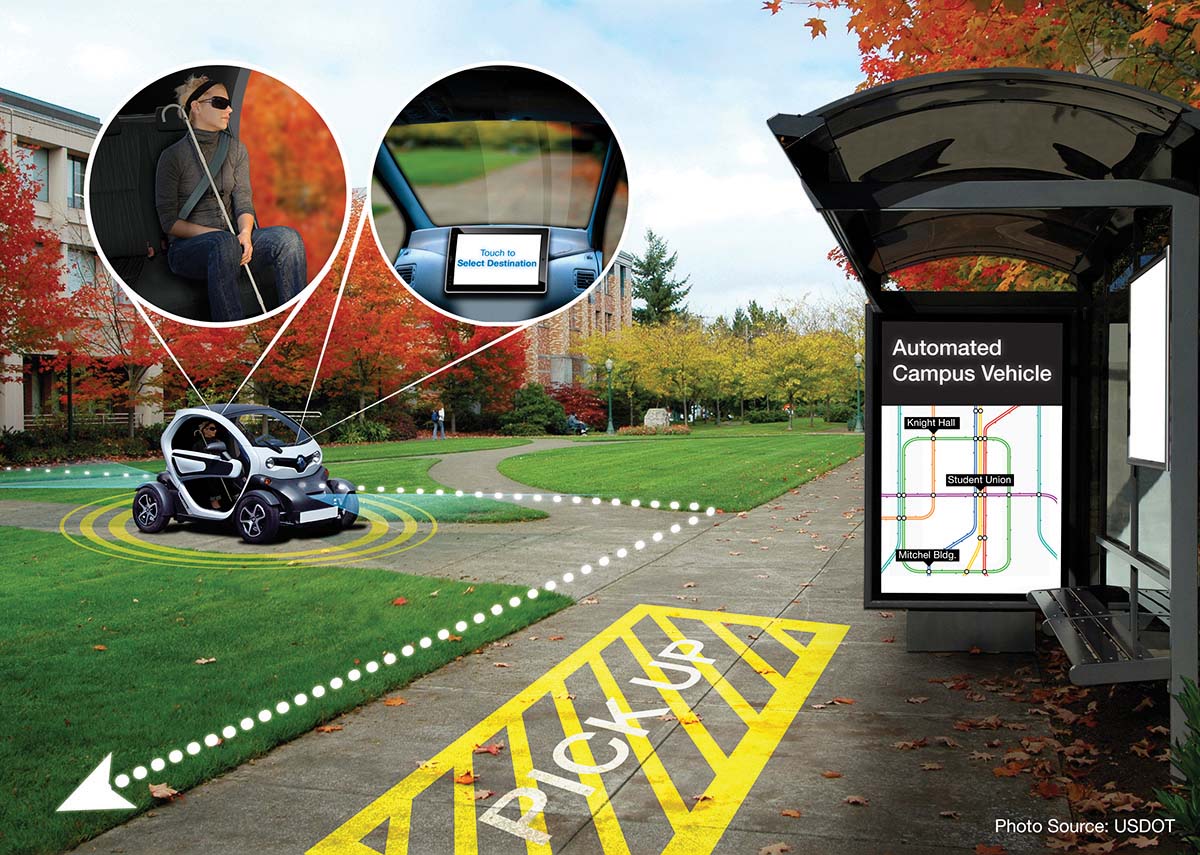
Ken Leonard, director of the USDOT’s ITS Joint Program office made time in his schedule during the Helsinki Congress to speak to ITS International.
It has been 18 months since Ken Leonard took over as the director of the Intelligent Transportation Systems Joint Program Office at the
But to what end, what would he like to see happen during his tenure? “I’d like to see connected vehicles deployed worldwide.”
As the US is now taking steps to enable Vehicle-to-Vehicle (V2V) communication technology for light vehicles, does he think America is leading the field in connected and automated vehicles? “People ask; ‘Who is in the lead: America, Europe, Japan, Korea…?’ Everybody is in the lead if they are focussing on the problems they want to resolve; in Japan they have been focussing on mobility problems, in Europe they have been focussing on environmental issues and we’ve been focussing on safety issues. In the end we will all have to solve mobility, environmental and safety issues but with 33,000 fatalities a year we are concentrating on safety.
“Our research shows that this technology has the potential to address 80% of non-impaired crashes. That is a significant benefit. That’s not to say that the environmental and mobility angles are not being examined as research projects in these sectors are underway but the main focus is on safety. One recent technical innovation that holds the potential to both increase and compromise safety is the smartphone which has been linked with an increase in distracted driving accidents as drivers can lose concentration especially if they are reading or sending messages.
“Smartphones have the potential to play an important role in the deployment of this technology. While it will take many years for the vehicle fleet to turn over, smartphones could potentially be used to send and receive signals in current vehicles. Also, smartphones can play a role in V2X – Vehicle to Pedestrian, or IVehicle to Bicycle. This would give awareness of the position on the roadway of those not in a connected vehicle.
“Somewhere between the connected and automated vehicle there is the potential to address some of the biggest sticking points in transportation safety.”
He cites the example of mobility for some older people who because of health or other problems should not be driving but continue to do so as they do not want to become isolated.
“Automated vehicles would give these people mobility – be that to a doctor’s appointment or a social engagement.”
The cost to society would also be reduced as the individual would be able to make their own way to appointments and road safety would be improved at the same time. While the automated vehicle may be some way off, connected vehicles are very much on the starting block and in preparation for the introduction of legislation; the US DOT is sponsoring the$18m Ann Arbor on-road Safety Pilot. This sees nearly 3,000 cars, buses, trucks and motorcycles outfitted with various ITS systems including dedicated short range communications (DSRC) devices to test the effectiveness of V2V and V2I safety applications. In 2015 the US DOT intends to broaden the scope with procurements of projects exploring the issues surrounding mobility and efficiency.
“We continue to work actively with our partners in the standards developing organisations to ensure that the many private sector actors involved in ITS deployment – from OEMs to suppliers to technology firms to infrastructure and construction firms – all produce interoperable equipment and systems that can seamlessly share the data that enables safety and the other applications. We continue to pursue this interoperability with our international partners as well, as transportation equipment and services are a global market.”
On the topic of interoperability and global protocols he says: “Part of that is to make equipment that has a chance of working anywhere in the world. I think there will be differences, but there will be as much commonality as possible. For instance 5.9 or 5.8GHz is not a major problem – you build one radio to get economies of scale and use different software to suit. That doesn’t mean there won’t be locally written software to address particular problems.”
Next year NHTSA will also publish guidance on the capabilities needed for a connected vehicle infrastructure which follows on from footprint analysis undertaken by AASHTO (the American Association of State Highway and Transportation Officials). “Several states are already investing in ITS infrastructure and they want to know that the money they spend today will still be working for them in 30 or 40 years. That’s not to say the technology won’t change because it will, but they want to build a forward-looking infrastructure that will be relevant well into the future.
“Many of the spending decisions are made at the state and local levels. The most recent transportation reauthorisation bill included ITS as one of the areas where funding could be applied.”
That raises the subject of funding and the US DOT’s traditional role as a funnel through which fuel tax revenue is collected and distributed to individual states. For several years the US Highways Trust Fund has been collecting less revenue than it costs to fund the system and Congress has provided a transfer of funds from the General Fund to fill that shortfall.
The new Grow America Transportation Bill has proposals to address this issue but, while acknowledging geo-tolling trials in areas like Oregon, Leonard does not see ITS technology encroaching on this area.
“We are pursuing ITS technologies for safety and mobility. No part of our program is geared towards raising revenue.”
This brings the conversation round to the topic of data protection about which he says: “We wouldn’t presume to tell states what approach to take. Some record the roadside data, others donot. Speaking to those who choose not to store the data, the reason is usually because they don’t want to be subpoenaed for every traffic accident – that becomes very expensive for the state.”
While connected vehicles may be on the way, it will be many years before they represent a critical mass on American roads and non-connected vehicles will be a factor of life for many years to come.
“It will be a very complex world for the next couple of decades,” said Leonard although in his position he is looking ahead to the time when new vehicles are connected.“We are committed to building the environment in which connected and eventually autonomous vehicles can operate and we will be very careful in designing the systems so they do not collect people’s private data. This technology doesn’t share any identifying information about a connected vehicle.
“The vehicle’s size and weight may be important and if it is a commercial it might be a useful check to ensure the driver has the appropriate licence. But our main interest in the individual is to be able to communicate with them in the event of a system failure to pass on a warning to the driver.”
That communication need not be through the ITS system itself, it could be through DSRC such as directly to a smartphone. Indeed he is very enthusiastic about the ITS potential of smartphones in many areas – while also being wary of the potential for negative effects too. “[Former Secretary] LaHood made it a personal cause to discourage distracted driving – even distracted walking.
I have seen video of people walking off the edge of the sub way platform while texting or playing a game on their smartphone. If you are driving you need to hang up the phone and focus on driving; we can’t have people trying to read and write while driving.”
Looking further ahead, the smartphone also has the potential to provide much wider benefit to other road users: “I can see the time when many pedestrians, cyclists and those with special needs have smartphones with DSRC capability. These would not only be detectable by in-vehicle systems but also by other transportation infrastructure.
“For instance, if somebody can only walk very slowly, their smartphone could send that message to the traffic signals so it will increase the crossing phase by an appropriate depending on the individual’s impairment.” Not only does that work for the individual, it works for motorists too as the standard timing can be optimised for those with a normal walking pace.
“We are not building that today, but it is part of the promise of connected vehicle technology.”
So what does he see as the biggest challenge? “Cyber security – it’s going to be a really big issue and will continue to be an evolving problem. I don’t see it ever going away.”
So there will be some challenges left for Leonard’s eventual successor to tackle – perhaps in a decade or so.











